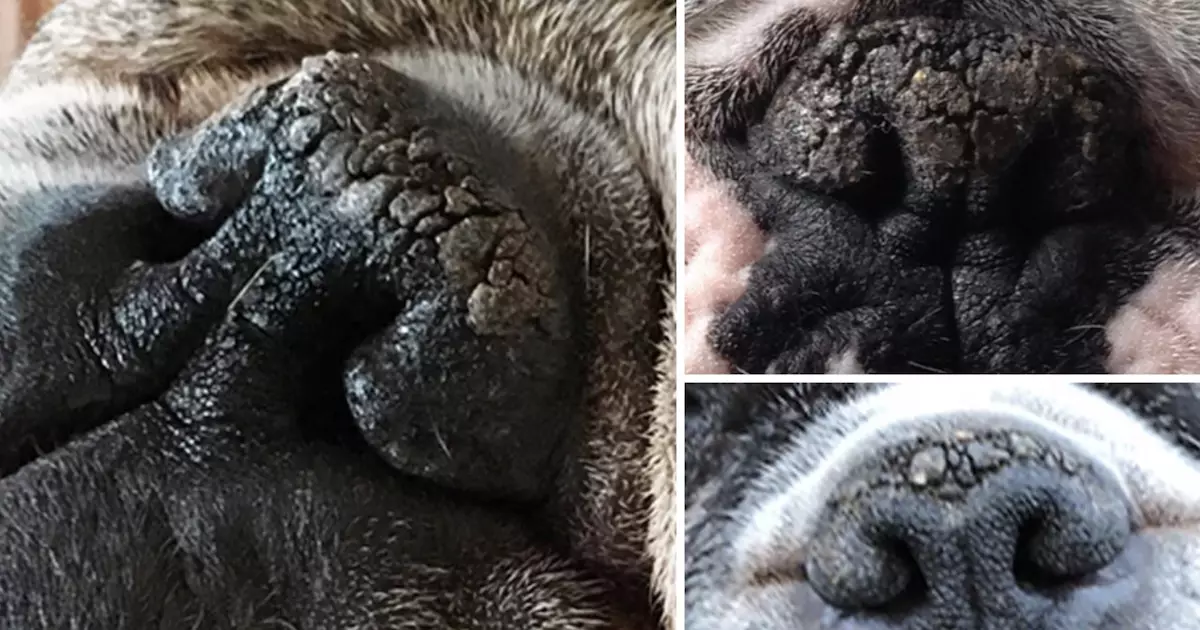Nasal hyperkeratosis, often overlooked by many pet owners, is a condition that affects the nasal area of certain dog breeds. Unlike the occasional mild dryness a dog may experience, nasal hyperkeratosis manifests as a more severe and chronic dryness characterized by the excessive buildup of keratin—a protein that usually forms a protective layer on the skin. Despite it being classified as idiopathic, meaning the exact cause remains unknown, it typically arises in breeds that exhibit unique physical traits. Not only does this condition impact the aesthetic aspect of a dog’s nose, but it can also lead to discomfort, hindering the canine’s ability to interact with their environment effectively.
At-Risk Breeds and Their Characteristics
Specific dog breeds seem more prone to nasal hyperkeratosis, suggesting a correlation between conformational traits and heightened susceptibility to nasal problems. Breeds like Bulldogs, Pugs, and Poodles possess distinct physical characteristics that may contribute to a compromised immune system. Flat-faced or brachycephalic breeds typically experience respiratory constraints which can exacerbate skin issues. Similarly, both exceptionally small and large breeds face unique health challenges that may cause irregularities in their skin and nose health. Moreover, the genetic predisposition of these breeds could foster conditions maximizing the likelihood of hyperkeratosis.
The Discomfort Beneath the Surface
While most veterinarians label nasal hyperkeratosis as a cosmetic concern, the discomfort it inflicts should not be dismissed lightly. Dogs rely heavily on their sense of smell, which is largely facilitated by the moisture of their noses. When this balance is disrupted, dogs may exhibit signs of frustration or stress. Symptoms might include excessive licking of the nose, pawing at the face, or diminished interest in typical activities. These behaviors serve as alarming indicators that their physical well-being and emotional mood have been affected by the condition.
Palliative Measures and Potent Solutions
Fortunately, relief is within reach. Many dog owners have found success in treating nasal hyperkeratosis by using nourishing oils specifically formulated for canine care. Products like Natural Dog Company’s Snout Soother combine various natural oils and butters that penetrate deep layers of the skin for maximum hydration. The application of such treatments not only softens the crusty area but can also prevent further keratin buildup. Effective hydration through specialized nose balms is paramount, and a regime of 2-3 applications a day for several days can make a remarkable difference. After observing improvements, transitioning to a maintenance schedule ensures that your dog’s nose remains healthy and moisturized.
Moisturize Your Way to Healthier Noses
As dog parents, prioritizing our pets’ comfort means addressing their vulnerabilities head-on. Paying heed to nasal health can significantly improve a dog’s quality of life, allowing them to thrive rather than just survive. Exploring further options, such as the ten best snout soothers available, can empower owners to make informed choices that cater to their unique pet’s needs. Nasal hyperkeratosis may be a challenge, but with the right tools and knowledge, you can substantially improve your furry friend’s comfort and happiness.

